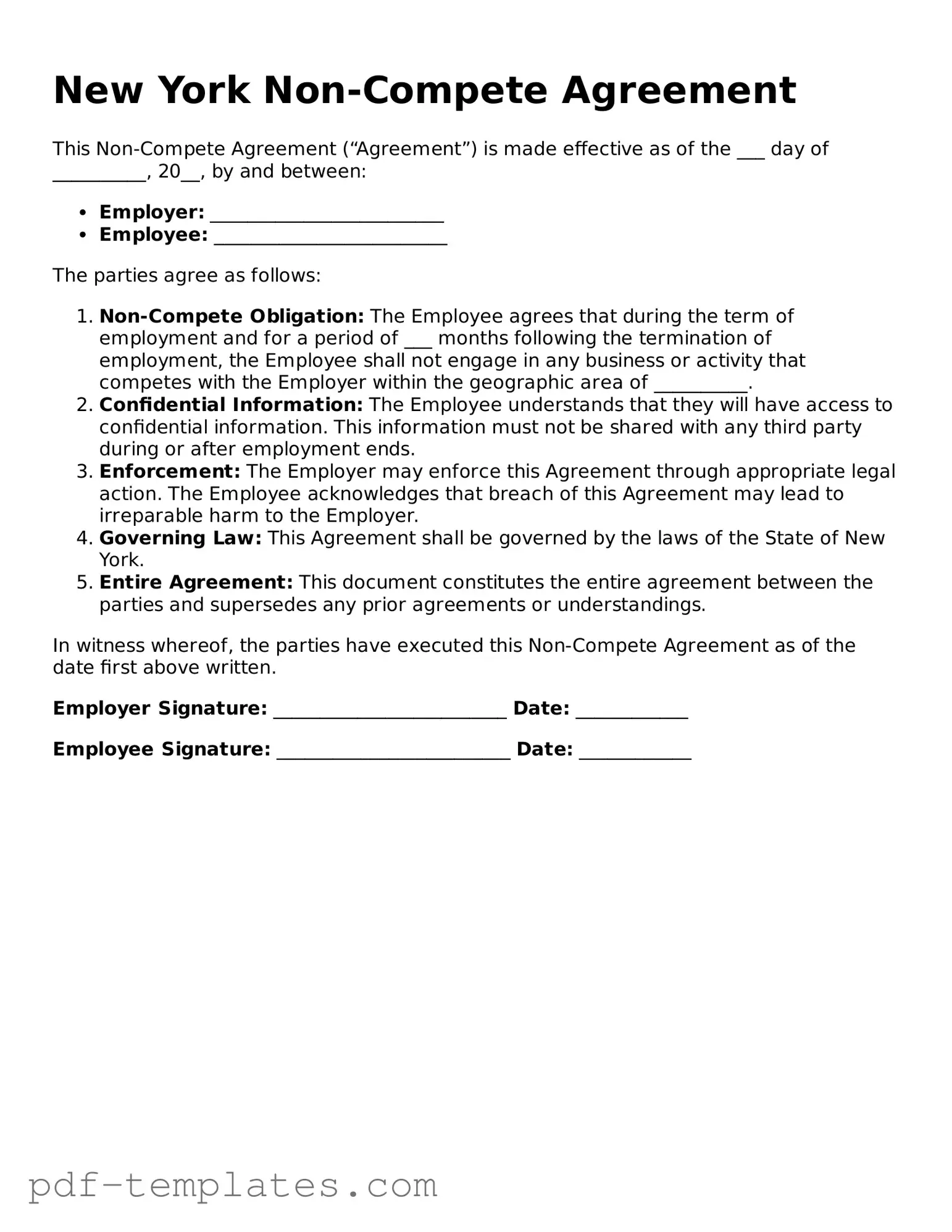A Non-Disclosure Agreement (NDA) serves a similar purpose to a Non-compete Agreement by protecting sensitive information. While a Non-compete Agreement restricts an employee from working with competitors after leaving a job, an NDA ensures that confidential information shared during employment remains private. Both documents aim to safeguard a business's interests, but they focus on different aspects of the employer-employee relationship. An NDA is often signed when an employee has access to trade secrets or proprietary information, making it crucial for maintaining a competitive edge.
A Non-Solicitation Agreement is another document that shares similarities with a Non-compete Agreement. This type of agreement prevents an employee from soliciting clients or employees of the company after their departure. While a Non-compete Agreement restricts the employee's ability to work in the same industry, a Non-solicitation Agreement focuses on maintaining business relationships and preventing poaching. Together, these agreements help companies protect their workforce and client base from potential disruptions caused by former employees.
An Employment Agreement often includes elements found in a Non-compete Agreement. This contract outlines the terms of employment, including duties, compensation, and any restrictions after employment ends. While an Employment Agreement primarily focuses on the relationship between the employer and employee during the course of employment, it may also incorporate clauses that address non-compete obligations. This ensures that both parties understand their responsibilities and limitations right from the start.
A Confidentiality Agreement, like a Non-compete Agreement, aims to protect a company's proprietary information. This document ensures that employees do not disclose sensitive information to outside parties during and after their employment. While a Non-compete Agreement restricts where an employee can work after leaving a company, a Confidentiality Agreement focuses on the information shared during employment. Both agreements are essential for maintaining a company's competitive advantage and protecting its intellectual property.
For those considering homeschooling, completing the required Texas Homeschool Letter of Intent form is a crucial step. This document allows parents to formally inform the state of their intent to educate their children at home. To access the necessary form, click on the following link: streamlined Texas Homeschool Letter of Intent process, and begin your journey today.
A Franchise Agreement also shares characteristics with a Non-compete Agreement. This document governs the relationship between a franchisor and a franchisee, detailing the rights and responsibilities of both parties. Often, Franchise Agreements include non-compete clauses to protect the brand and its business model. By preventing franchisees from operating competing businesses within a certain geographical area, franchisors can maintain the integrity of their brand and ensure that franchisees adhere to established operational standards.
